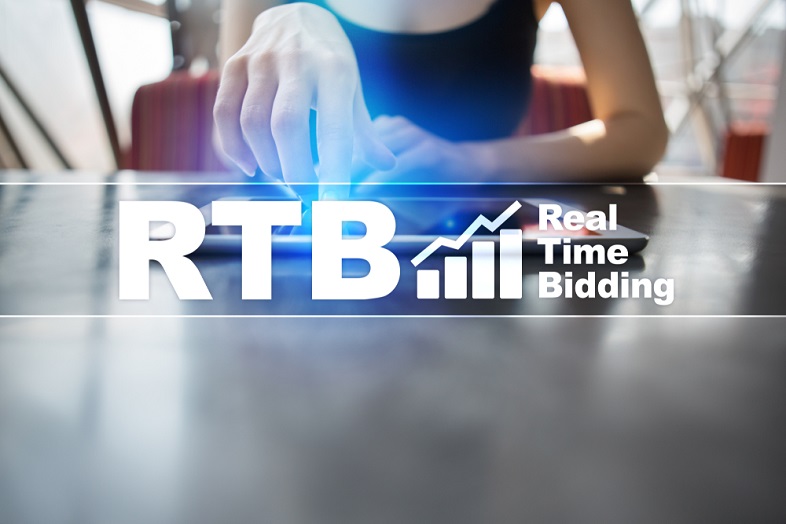Alex Bornyakov, founder of Adtelligent, talks about how the growth of blockchain will help in the transformation of programmatic advertising through RTB for Smart TV.
The programmatic advertising industry is rife with issues, including fraud, manipulation of data, low traffic quality, and lack of transparency of the bidding process. Despite these issues, programmatic RTB(Real-time bidding) is set to become a leading method for advertising on Smart TV. The global Smart TV market, according to Grand View Research, was valued at $145 billion in 2017, is anticipated to grow at a CAGR of 9.5% during the forecast period and reach $292.55 billion by 2025.
I, along with other leaders in the digital advertising space, believe that blockchain integration has the potential to satisfy the market demand for transparency and reinstate trust in programmatic advertising. This will be achieved by creating a new blockchain-based RTB protocol for Smart TV that propels industry growth, meets required thresholds for transaction speeds, and fights fraud through irrefutable smart contracts.
Big potential for industry growth

Programmatic and RTB have had a tremendous impact on the web, becoming the most popular and widely-used types of digital display advertising in the USA and the UK in 2015. In the US alone, $27.47 billion was spent on programmatic digital display advertising just last year.
Programmatic RTB for Smart TV has the potential to scale into an increasingly valuable ad channel. 32% of TV buyers today own Smart TVs, totalling 1 billion devices worldwide. Yet, this form of advertising has several new roadblocks when it comes to growth. One such example is the current low availability of premium inventory. Publishers today have to adapt quickly to the latest media buying trend if they want to remain on board.
Blockchain removes intermediaries, meaning that brands and content owners can directly transact with one another. Content owners, as a result, are faced with fewer restrictions and will be able to attract with smaller and niche brands of all shapes and sizes. Due to the nature of P2P transactions through blockchain and less funds going to middlemen, brands will have the opportunity to place targeted advertisements at lower costs than ever before. With all transactions recorded on an irrefutable ledger, blockchain ensures marketing budgets are used effectively, another compelling impetus to advertise and for industry growth.
A need for speed
One of the central issues with executing blockchain RTB for Smart TV today is transaction speed. A system does not yet exist that allows large enough volumes. This inhibits the potential for advertisers.
What’s needed is a new protocol that can handle sending sufficient volumes of data to the blockchain.. With transaction volumes up to speed, brands will be able to optimize their costs, better target clients, and choose the time and amount of advertising scrolling at suitable prices. In turn, enabling brands to not only pay for the number of scrolls, but also the displayed duration which cannot be done today. As an example, this approach would allow advertising at a time when a television is being viewed across many devices, increasing audience coverage and the overall effectiveness of advertising.
Enforcing safeguards to fight fraud
Trust is eroding in the ecosystem for a number of reasons. For one, ad fraud is alive and well across OTT channels, typically in the format of masking n techniques that go undetected. In fact, Pixalate, the first MRC accredited vendor of detecting and filtering invalid traffic in OTT, reported that global OTT fraud rates average 19% and that Marketers may lose $10 billion annually in OTT ad spend by 2020.
Due to the aforementioned issues, advertisers are demanding transparency from partners to ensure fair value. Blockchain integration would allow brands to control pricing and manipulation of data, ensure transparency of the bidding process, target users at the right time through access to user data via blockchain smart contracts.
Today, there are a few major players working to make RTB for Smart TV a reality.
In September 2017, The Interactive Advertising Bureau (IAB) Technology Lab announced version 3.0 of their OpenRTB framework which was, “evolving to handle new kinds of programmatic buying and selling, such as header bidding, content sales, product recommendations, Smart TV, or perhaps even products.” It was the biggest revision to the protocol in seven years and has recently been rolled out in beta, with mass adoption projected for 2019.
Such innovative types of the business models which combine B2B marketplaces and blockchain technology has created a new system that allows accumulating a large volume of events, and after that sends this data to blockchain in one package. In other words, it’s not necessary for B2B advertising marketplace to save each transaction from RTB to the blockchain due to the fact that customers of such type of platforms will use an independent verification accounting system that will be able to benefit from internal RTB. Not all data will be saved into blockchain, but only critical resulting events such as division of profits among participants.
Integrating blockchain technology into the RTB system for Smart TV shows promise for growth of the advertisement industry and the elimination of fraud and lack of transparency. By eliminating intermediaries and introducing smart contracts to the platform, brands large and small have more opportunity to be profitable and are granted access to accurate analytics and data.








Оставить комментарий
You must be logged in to post a comment.